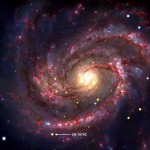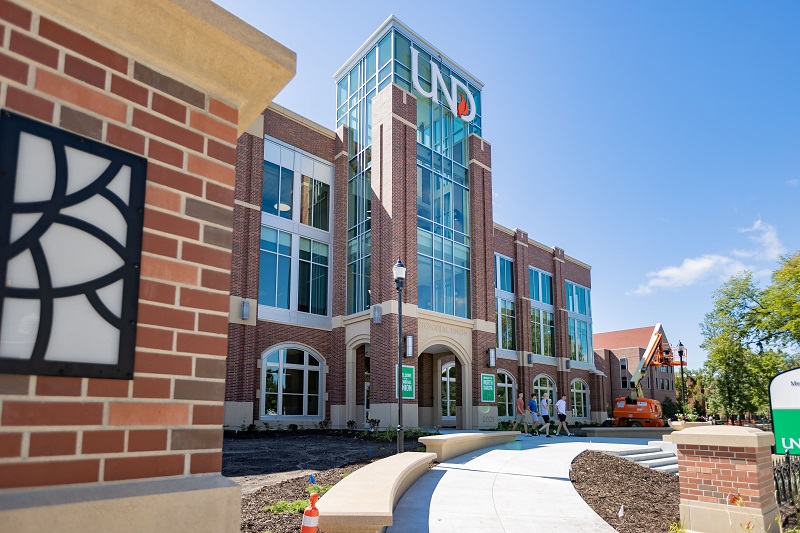Harvard astronomers discovers black hole predicted by UND astrophysicist Timothy Young and student team

Harvard astronomers using the National Aeronautics and Space Administration’s (NASA’s) Chandra X-ray Observatory discovered evidence of a black hole in a galaxy about 50 million light years away from Earth—by astronomical standards, a real neighbor. The discovery confirmed prediction published by UND astrophysicist Tim Young and his student team.
The location of the black hole—the newest one known—is at the site of a supernova that exploded in 1979. A theoretical model of the black hole, based on optical observations of this supernova, was proposed by Young and graduate students Dean Smith and Tricia Johnson.
The UND research team’s theory, published in 2005 in the Astrophysical Journal Letters, predicted that a black hole should have been produced at the explosion site of this supernova. It was an original and, at the time, hotly debated prediction.
“We proposed a two-component model—a jet from a black hole and an underlying normally exploding star, or supernova, to fit the optical data,” said Young. “We were driven to predict a black hole engine similar to gamma-ray bursts seen in the cores of very massive exploding stars, or hypernovae.”
Young’s prediction—made about an object 50 million light years away and about something than no one had actually observed before—turned out to be correct.
“ To actually have predicted this and now finding evidence of a black hole is a success of science,” Young said.
For astronomers and astrophysicists, this discovery is a major coup.
“This black hole could help us more clearly understand the black hole formation process, and tell us a lot more about the origins of the Universe,” Young said.
The 30-year-old black hole that Young and his team theorized in their 2005 paper in Astrophysical Journal Letters is a remnant of SN 1979C, a supernova in the galaxy M100 (which is just visible in the constellation Coma Berenices with a good pair of binoculars).
Scientists, including Young, believe that SN 1979C, discovered by an amateur astronomer in 1979, formed when a star greater than 20 times heavier than the Sun collapsed.
“It’s very rewarding to see how the commitment of some of the most advanced telescopes in space, like Chandra, can help complete the story,” said Jon Morse, head of the Astrophysics Division at NASA’s Science Mission Directorate at a televised news conference Monday announcing the widely reported discovery.
— Juan Miguel Pedraza, writer/editor, University Relations, 777-6571, juanpedraza@mail.und.edu.


